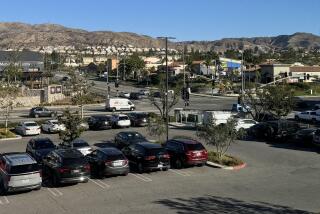Air quality at schools is scrutinized
- Share via
The Los Angeles Board of Education is beginning to explore policies that would preclude schools from being built close to freeways and reduce air pollution at the dozens of campuses that already are located near major roadways.
The push for reform comes in the wake of an article in The Times in September revealing that more than 60,000 L.A. Unified students attended school within 500 feet of a freeway -- where large concentrations of pollutants are found. The district is building five schools within 500 feet of highways and had plans for two more.
Those two -- Central Region High School No. 15 and Central Region Middle School No. 9 -- were taken off the table after The Times began asking questions about them, officials revealed this week.
A 2003 state law prohibits schools from being built within 500 feet of major roadways unless the district can mitigate the pollution or space limitations leave it no option. The law was written in response to emerging science showing that pollution is highly concentrated close to major roadways. More recent studies have shown that children who live near freeways suffer from decreased lung function and development and increased incidents of asthma.
School board member Yolie Flores Aguilar, who joined the board this summer, heads the board’s facilities committee, which oversees the district’s $20-billion school construction and modernization effort. She has called for a series of meetings to outline future policies over where the district will build schools. She is also pushing for recommendations from the district’s environmental division regarding how to reduce the impact of freeway-caused air pollution on existing schools. Aguilar expects the committee to forward recommendations to the full seven-member board by February.
She said her concern stems from her own experiences as a child in Huntington Park.
“I was in oxygen tents growing up,” said Aguilar, who was born with a severely narrow trachea, restricting her ability to breathe. “This is a very important issue for me.”
Angelo Bellomo, head of the district’s Office of Environmental Health and Safety, has ranked the district’s dozens of freeway-adjacent schools based on such factors as size of the student body, number of years students attend the campus, distance to freeways and volume of diesel trucks that travel the freeways.
The list includes West Vernon, Soto and Lorena elemen- tary schools, the recently open- ed Hesby Oaks School and College Ready Academy High School No. 4.
The problem with reducing air pollution at those schools is that researchers now believe the most noxious contaminants are hitched to dust specks so small that they’re hard to capture and cannot be filtered.
Bellomo said the best solutions would involve state or federal regulation to further reduce the contaminants spewed from vehicles.
“Tougher emissions standards -- that’s really how we’re going to deal with these impacts,” Bellomo said at the board’s first committee meeting on the subject last week.
He showed the board aerial shots of sections of the 101 and 110 freeways with schools perched on their edges and dozens more scattered in larger swaths where researchers have linked freeway contaminants to breathing problems in children. He also pointed out that not only schools but homes too are located in those high-pollution zones.
After Bellomo’s presentation, facilities chief Guy Mehula said two schools that the district had been leaning toward building within 500 feet of freeways have been killed.
The district abandoned the preferred site for Central Region High School No. 15 -- which had been scheduled for 2100 Marengo St., adjacent to Interstate 10 near the interchange with the 5 Freeway -- and put Central Region Middle School No. 9 -- planned for Euclid Avenue and 7th Street, near the 10 Freeway -- on hold because of budget constraints, officials said.
Aguilar said her desire to closely oversee the actions of the district’s school construction operation has created some tension with the facilities staff. Previous board members did not address the location of schools with regard to their proximity to freeways.
“The word was rein her in,” Flores said. But she said she was undeterred.
“We can’t just let staff make the decisions,” she added. “If we’re just rubber-stamping them, we’re not doing our job.”
More to Read
Sign up for Essential California
The most important California stories and recommendations in your inbox every morning.
You may occasionally receive promotional content from the Los Angeles Times.













